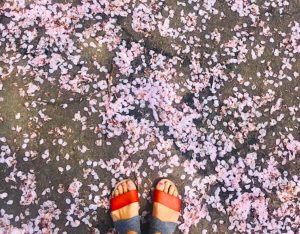
Ever walked out of a yoga class feeling peaceful? Even-keeled? Like you had hit the reset button? Same here. It was what first hooked me. I reluctantly walked into a yoga studio after injuring myself playing collegiate sports, feeling scatterbrained and despondent about my body. A friend dragged me to a yoga studio down the street. I walked in and was terrified, standing in the studio in a crowd of people who knew what they were doing. We moved our bodies, breathed, and then … took a nap. I walked out sweaty, tired, and filled with a sense of peace I had never felt before.
It’s not surprising that yoga has exploded in the U.S. Making a living here can feel like you’re on a treadmill, running at full speed just to keep up. In a world that constantly fights for your attention, your labor, and your money, yoga has entered the mainstream as a way to combat the stressors of everyday life. But what is it exactly that makes you feel at ease?
I used to believe it was a result of stretching and giving attention to overused muscles, but as I’ve developed my practice I’ve learned that ease can be cultivated without a physical practice at all. I had simply not stopped moving long enough to notice anything.
This was my first experience with true body awareness. Body awareness is defined two ways: external (proprioception) or internal (interoception). Proprioception is the ability to understand where you are in space, that you’ve lifted your foot to take a step or raised your hand. Interoception refers to the understanding of what is happening internally, like your heart beating or feeling hungry.
The first step to cultivate body awareness? Make time and space for stillness. Eastham psychotherapist and yoga teacher Sara Moran calls this moment of stillness “the transitional space” from the outer to the inner world. In this space you have an opportunity to develop understanding of your internal state. Unlike taking a nap, in transitional space you are fully conscious and willfully concentrating on what you are feeling in the present moment. Emotions, hunger, exhaustion, tingling, constriction, your left foot, the wind on your face — if you feel it, you notice it. This level of understanding increases our capacity to center ourselves. We are more likely to notice when we are in pain or stressed and less likely to ignore symptoms of larger issues.
I now understand that this is the key to the sense of ease I’ve been chasing for over a decade. I am empowered by an awareness of my internal state. Once I understand what is going on internally, I have the ability to act. The pit in my stomach, usually my body’s go-to when I am anxious, is now a cue for me to get outside. Often it is the simple act of sitting down and paying attention to myself that allows me to soften my shoulders, release my jaw, and unfurrow my brow.
If you are drawn to the idea taking a purposeful pause, know that it doesn’t necessarily mean you need a yoga class. If you enjoy a group setting and the physical practice, be sure to seek out a yoga teacher you respect and like, one that makes you feel welcome. This can take some time, resources, and effort, but is well worth the search. If finding a yoga studio or class is prohibitive for you, a home mindfulness practice is where you begin. Set up a quiet corner for yourself, take a short pause to notice any sensations in your body with deep, even breaths, and, most important, keep doing it regardless of how many times you need to start over.
The awareness we seek is available at a moment’s notice. Maybe it will bring you a sense of ease like it did me for all these years. Maybe it won’t. There is only one way to find out.



